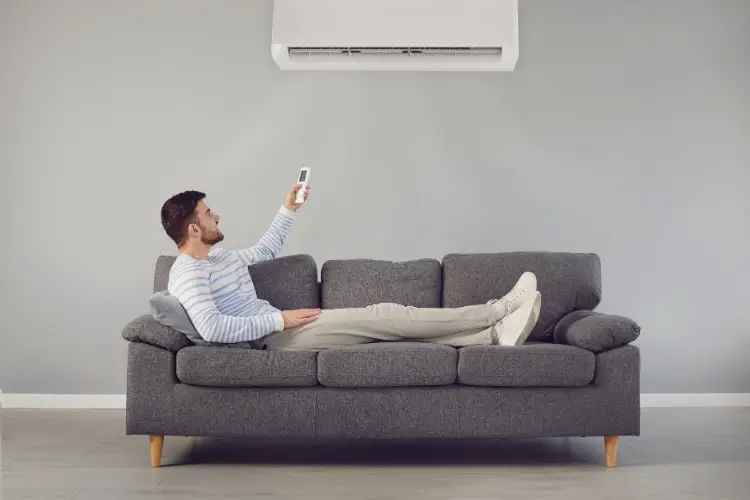Clean indoor air is needed to make a house comfortable and healthy. Allergies, breathing difficulties, and general discomfort can be caused by poor air. Basic tasks like cooking, cleaning, and even respiration release airborne particles into the atmosphere. Maintenance and ventilation are required if such pollutants are to be cleaned out of the atmosphere and evacuated before they accumulate to cause stale and contaminated indoor air. Fortunately, upgrading air freshness need not mean heavy equipment expenditure—small, occasional efforts can really pay off. Here are six simple steps for keeping a house’s air clean, fresh, and toxic pollution-free.
1. Increase Natural Ventilation
One of the simplest ways to improve indoor air quality is by introducing fresh air. Leaving doors and windows as open as feasible allows stale air to escape and fresh air in. Cross-ventilation, where air passes through the house from side to side, is very effective at removing indoor pollutants. This can be particularly effective during cooking, painting, or the use of cleaning chemicals that release strong fumes. When there are otherwise problematic outdoor air quality conditions due to pollen or pollution, window screening or air filtering can offset the ventilation without letting pollutants into the home.
2. Maintain Clean Air Filters
Air filters trap dust, pet dander, and other particles suspended in the air before they are circulated within the home. Filters become clogged with debris over time, reducing efficiency and allowing pollutants to build up. Frequent filter checks and replacements ensure continued airflow and allow the HVAC to function at optimal levels. High-efficiency particulate air (HEPA) filters add extra filtration and can trap smaller particles, further improving indoor air quality. In allergy or pet homes, filters may have to be replaced more frequently. Not only does a fresh air filter keep the air fresh, but it also helps extend the life of heating and cooling systems.
3. Control Humidity Levels
Excess moisture in the air creates an environment for dust mites, mildew, and mold, all of which impact air quality. Low humidity causes a house to become stale and can cause musty odors. Very dry air, on the other hand, can irritate the skin and the breathing apparatus. Using dehumidifiers in damp areas like basements and bathroom spaces will avoid the formation of mold, while humidifiers add moisture in dry months. Holding indoor humidity between 30-50% offers an equilibrium atmosphere that is comfortable alongside free of too many airborne irritants.
4. Reduce Indoor Air Pollutants
Many common household products release poisonous chemicals known as volatile organic compounds (VOCs). They come in paints, air fresheners, cleaning solutions, and even furniture. Repeated exposure to VOCs causes headaches, dizziness, and long-term illnesses. Selecting natural, odorless cleaning solutions and low-VOC paints reduces chemical exposure. Furthermore, keeping houseplants like peace lilies or snake plants helps to absorb pollutants and release clean oxygen. Reducing unnecessary aerosols and artificial scents makes a noticeable difference in indoor air quality.
5. Maintaining HVAC
A properly serviced HVAC system is a critical element in circulating clean air and removing indoor pollutants. Dust, mold, and allergens can become trapped in vents and ducts, compromising air quality if not regularly cleaned. Professional services such as heating and cooling in Toledo, for example, offer meticulous checks and cleaning to ensure systems function well. Maintenance also ensures the detection of potential issues before they may lead to costly repairs or system breakdowns. Clearing vents, scheduling regular maintenance, and exchanging outdated air filters for better-quality alternatives optimizes airflow and contributes to the creation of a cleaner indoor environment.
6. Maintain Household Surfaces Dust-Free
Dust is among the most common indoor air contaminants and easily settles on furniture, floors, and surfaces. Dusting and vacuuming daily prevents particles from remaining airborne and affecting indoor air quality. Vacuum cleaners equipped with HEPA filters and microfiber cloths capture fine dust and allergens more effectively. Regular washing of bedding, curtains, and upholstery also removes hidden dust mites and pollutants. If you think you may have acquired some dust mite bites, make sure that you are cleaning things thoroughly to stop them from coming back. Regularly maintaining the home tidy eliminates airborne contaminants, ensuring the air is cleaner and healthier to inhale.
Conclusion
Clean, fresh air indoors is essential in keeping the home environment healthier. A few small things like maximizing ventilation, replacing air filters, controlling humidity, and reducing pollutants make a big difference. Regular maintenance of the HVAC system and ongoing cleaning also ensure the air is cleaner and healthier to breathe and the house is comfortable and toxin-free from toxic impurities. Making fresh air a priority not only makes daily life more comfortable but also improves long-term health and well-being. Using these techniques, any home can have fresher, cleaner air all year long.




